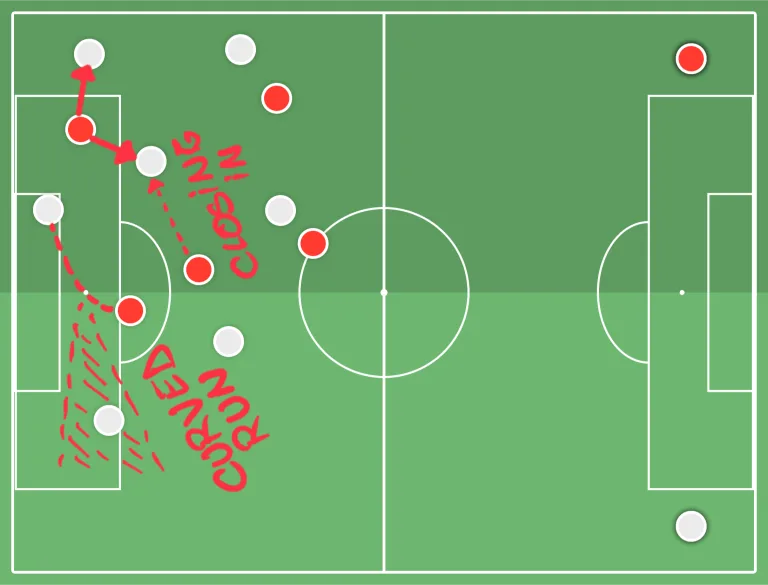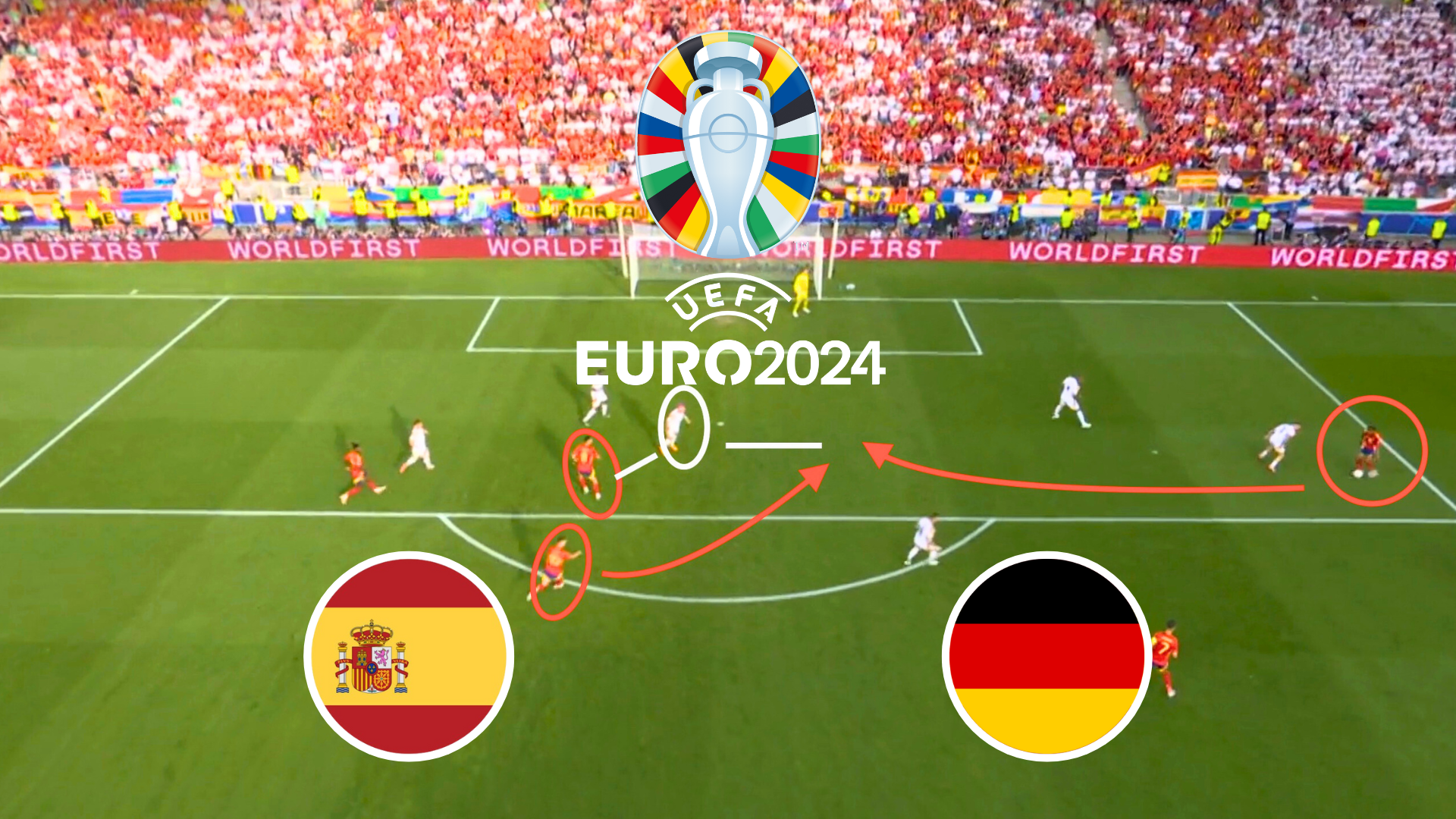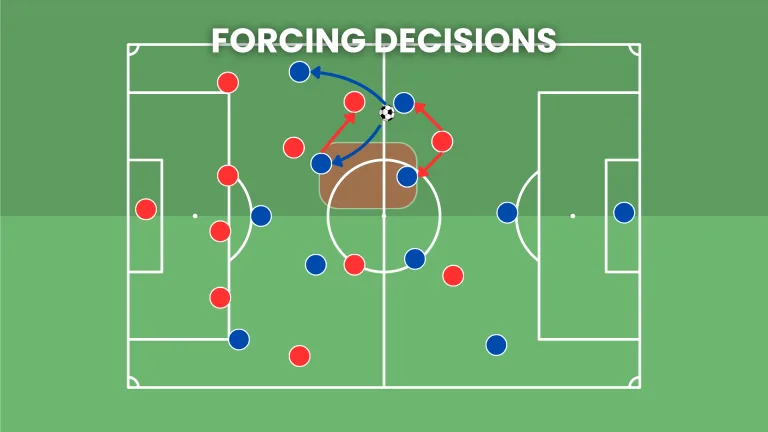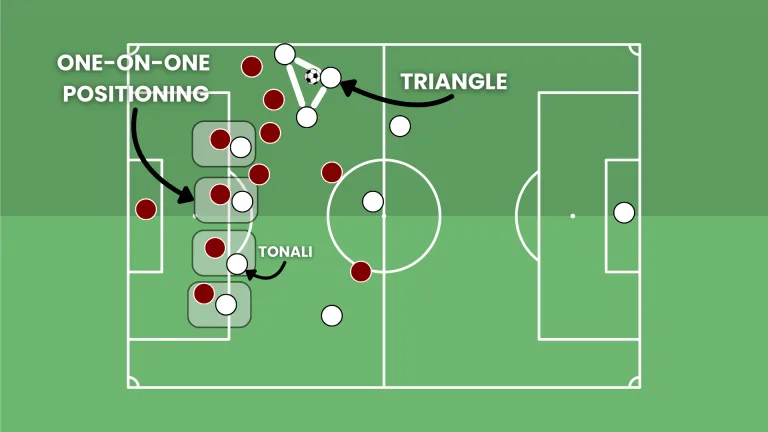The Offside Trap in Football: Mechanics, Goalkeeper Role, and VAR Impact
The offside trap is a defensive strategy in football. It is elegant yet risky. Implementing this tactic requires an almost perfect coordination and precision in the defensive line. And when it does not work, it can cost you goals and games. The basic principle of the offside trap is straightforward. Placing your opponent in an offside position, so their attack is instantly blocked and you regain possession.
So what are the key elements of the offside trap?
Basic Mechanics and Requirements of the Offside Trap
The basic mechanic of the offside trap is… the offside, of course! Or better said, forcing your opponent to be in an offside position. So how you do that? By stepping forward when the pass is launched, leaving your opponent behind the defenders. The basic idea is this: your defenders hold the back line while an opposing forward attempts to make a run behind them. So when the opposing team makes the pass trying to launch that forward, your defenders take a few steps in front. This leaves the opposing forward behind the defensive line when the pass is made. With emphasis on “when the pass is made”. Seems simple in theory, but it is difficult in practice.
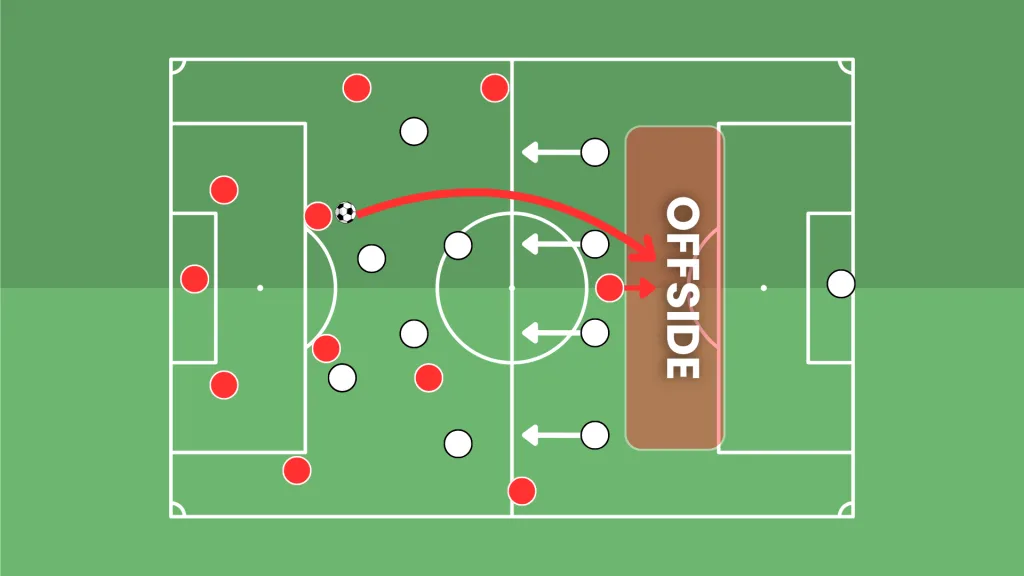
Timing and coordination between the defenders is paramount in realizing this tactic. To implement an effective offside trap, defenders should maintain a consistent line. If even one defender drops back or follows the runner, the trap fails, and the offside advantage is lost. Starting from a well-defined line, the second element of the offside trap is coordination.
The back line needs to be in sync when they step forward. If one defender is a bit late to the party, then it keeps the opposing forward onside, as the offside rule requires only one field player to be negated. Then, the third element is timing. The defenders need to step up just as, or right before, the pass is played to the runner. If they’re late, the forward will remain onside, and the trap won’t work.
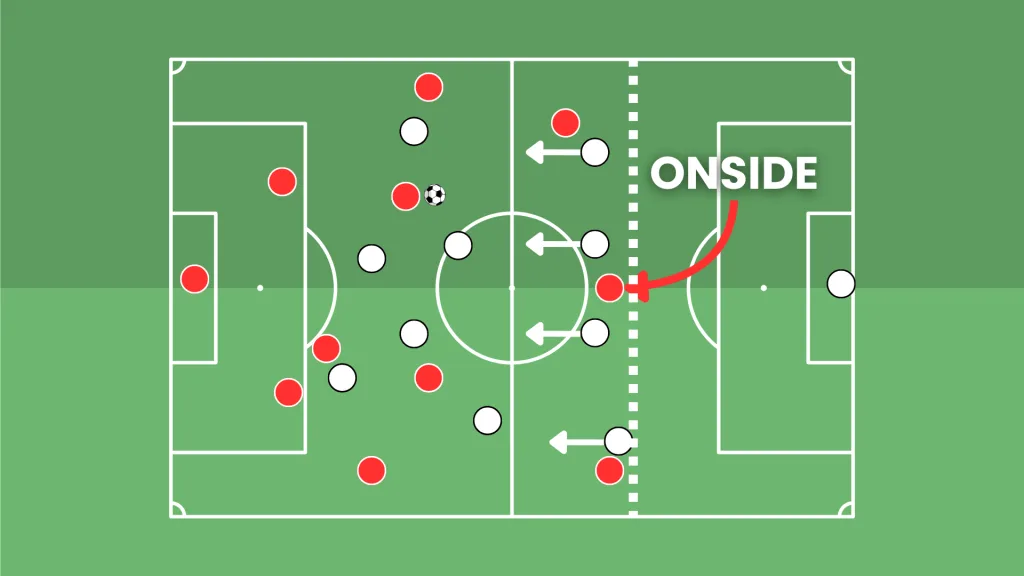
The Role of the Defensive Line and Positioning
The key role of the defensive line is to execute the offside trap, obviously. But here I want to focus more on positioning the defensive line. And how high the defensive line sets up. There’s no set line for how far up defenders need to be to use the trap, but their position affects the space available for opposing forwards to make a run. And it also dictates the space left for the opposing team to occupy.
Take Hansi Flick at Barcelona as an example. Flick implements a high line, with the defenders sitting in midfield, right on the line. This positioning opens up your half of the field for runs in behind, giving the opposing forward a lot of ground to cover before reaching the goal. This extra space allows your defenders a chance to catch up if they have the speed.
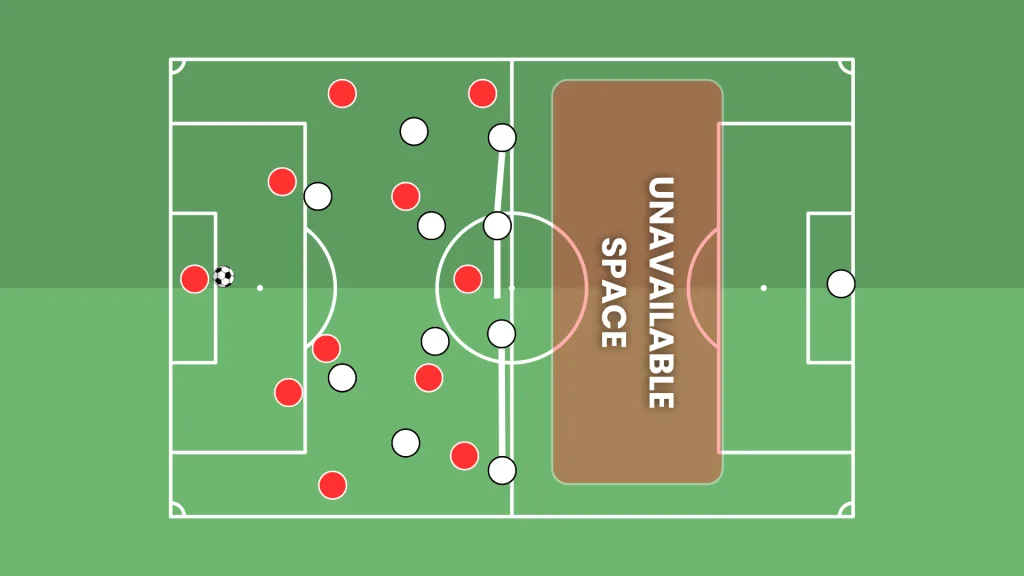
But it also means that the opposing forward has momentum, and it is harder to stop. For dictating the space, Flick’s high line confines his opponents into the own half. By placing his defenders in midfield, the opposing team cannot start occupying the space in Barcelona’s half. This forces them to either launch players in behind and try to beat the trap, or build-up through Barcelona’s intense pressing.
Of course, the offside trap does not mean having to push up your defensive line. It can be done from everywhere. For example, Manuel Pellegrini liked to set up the offside trap at the edge of his own box. This leaves much less room for runs in behind by the opposing teams.
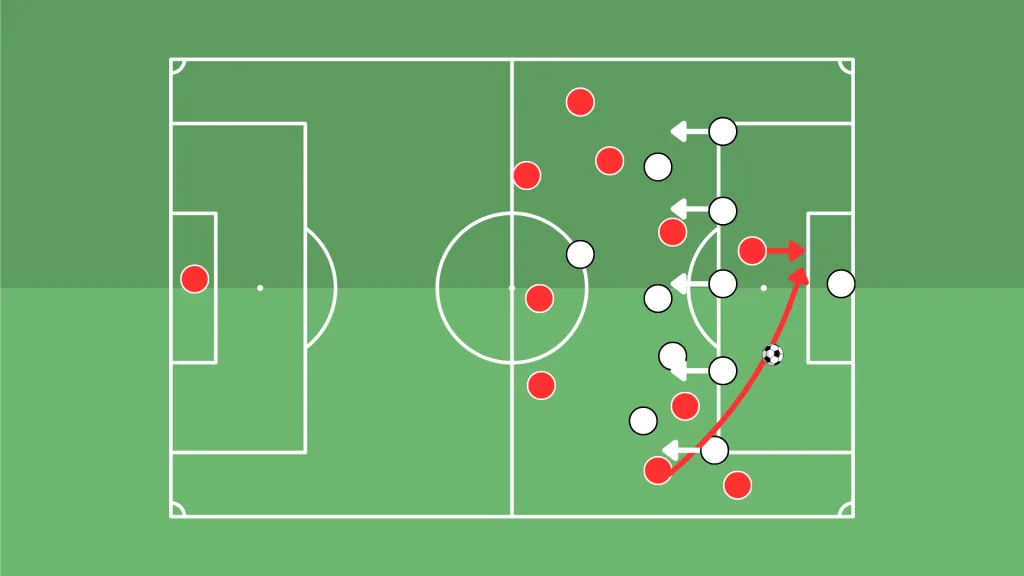
The Goalkeeper’s Role in the Offside Trap
Not only the defensive line is involved when playing the offside trap, but the goalkeeper as well. To adopt the offside trap, you need to involve your goalkeeper as well. This is because not every time executing the trap works, and sometimes passes will leak in behind for the forwards. When this happens, your goalkeeper needs to be ready to deflect and contest those passes.
Going back to Hansi Flick and Barcelona, in a game against rivals Real Madrid, where Barcelona got a crushing 4-0 win, we see this role executed by Inaki Pena. Looking at his heatmap, we see he didn’t stay between the posts, but acted like a 5th defender and an outfield player. By adopting a more advanced position, Inaki Pena was ready to clear off any long ball that bypassed the defenders and keep the sheet clean for Barcelona.
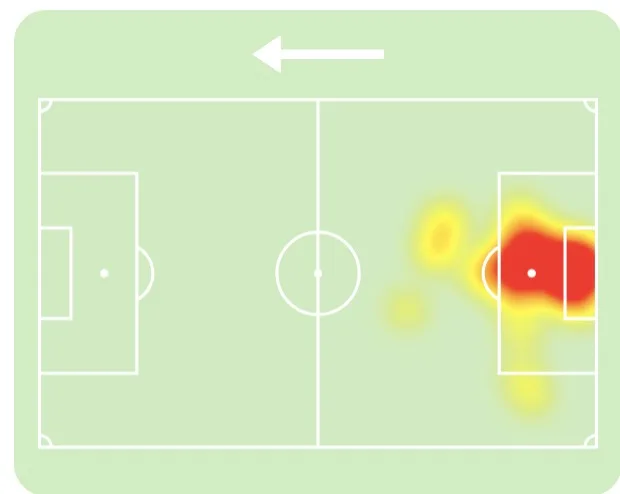
VAR and the Offside Trap
VAR and modern refereeing have had an immense impact on the offside trap. While the trap has been executed since the 1920s, I feel today it VAR makes the offside trap both easier and harder to execute. Before VAR, the assistant referee spotted those offsides, and sometimes he would miss the nuances or the slight differences in positioning. This means that, before VAR, one might have gotten away being a few centimeters in front of the defensive line when the pass was sent, but not anymore.
This works both ways, as VAR increased the level of precision and timing needed to implement the trap. Like the forward, the defender cannot get away with being a few centimeters behind, or a few moments late when stepping forward.
Yet VAR is an extremely controversial subject, and while I appreciate having VAR as sometimes, we could see obvious decisions ignored, where we, as fans, would sit on the TV and see that the call is wrong. But with the offside, I sometimes feel that VAR is nitpicking. I leave you with one example. Lewandowski’s disallowed goal against Real Sociedad. This is the official image released by VAR.
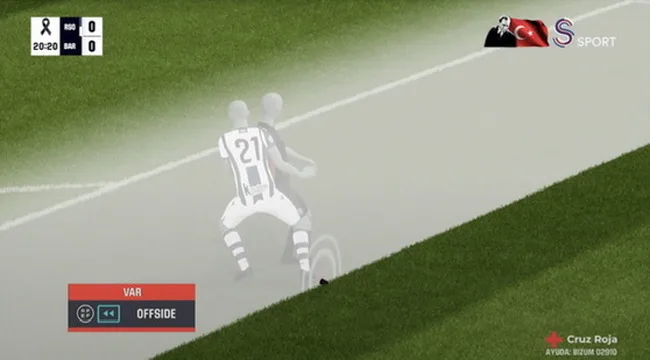
The offside rule avoided giving forwards the unfair advantage, or prevent players from sitting in front as an easy outlet. In Romania, we call this “receiving charity”, although the translation does not illustrate the Romanian expression. But the idea stands. The offside rule was invented to prevent players from not taking part in the game, sitting in front and receiving charity to score. Yet, is Lewandowsky’s toes in front of his opponent an unfair advantage? I’ll leave it up to you to decide.

